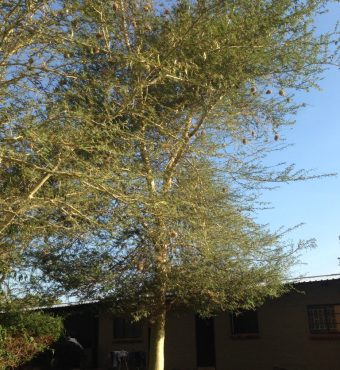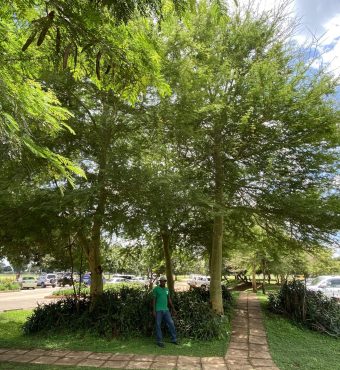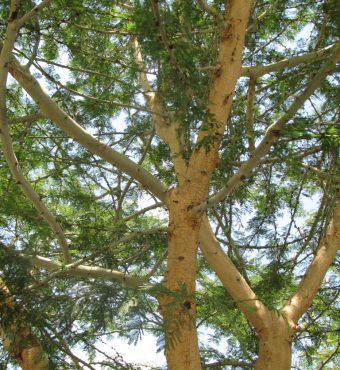


Botanical Name: Acacia xanthophloea Benth.
Common Name: Fever Tree
Plant Family: Mimosaceae
Origin: Southern Africa
References: Coates Palgrave p. 303, Joffe p.130, Venter p. 88. S.A. No. 189, Zimb. No. 228.
Description: Semi-deciduous to deciduous tree up to 30m tall with an open rounded to spreading crown with feathery light green foliage and characteristic green bark. Its spines are straight and paired. Flowers are round, bright yellow and sweetly scented, appearing between September and November. The pod is a small, straight, brown and dehiscent (splitting when mature).
Features of Particular Interest: The lemon-green powdery slightly flaking bark is its most distinguishing feature. The bark peels off in huge thick pieces leaving sculptured patterns on the trunk. The flowers and pods attract monkeys, insects and insectivorous birds. It is extremely fast growing.
Height and Spread: 12m, sometimes reaching 15m, spread 5-8m.
Periods of Interest:
Leaf: August to June.
Flowering: September to November.
Fruiting: January to April.
Bark: All year round.
Cultivation
Soil and Moisture: A. xanthophloea likes moisture and does well if planted next to dams or streams. In natural settings, normally found in sandy well draining soils.
Aspect: A. xanthophloea should be planted in either full sun or partial shade.
Hardiness: It is not hardy to frost and cold winds but it is drought resistant.
Maintenance and Pruning: It is not necessary to prune unless planted in restricted place. Very fast growing. It can grow up to 1 – 1.5 m per year.
Propagation: It is easily grown from seed but few seeds develop. Soak seeds in hot water and leave overnight before planting.
Problems and Drawbacks: Seeds difficult to come by and it is not easy to find plants in the market place.
Use and Associated Planting: A. xanthophloea is best used as a focal point on a large lawn, or in groups of up to 5 where space allows. It is also used planted in an avenue and gives an elegant approach to a country house. Its roots are non-invasive so can be planted close to walls and buildings in urban landscaping.
